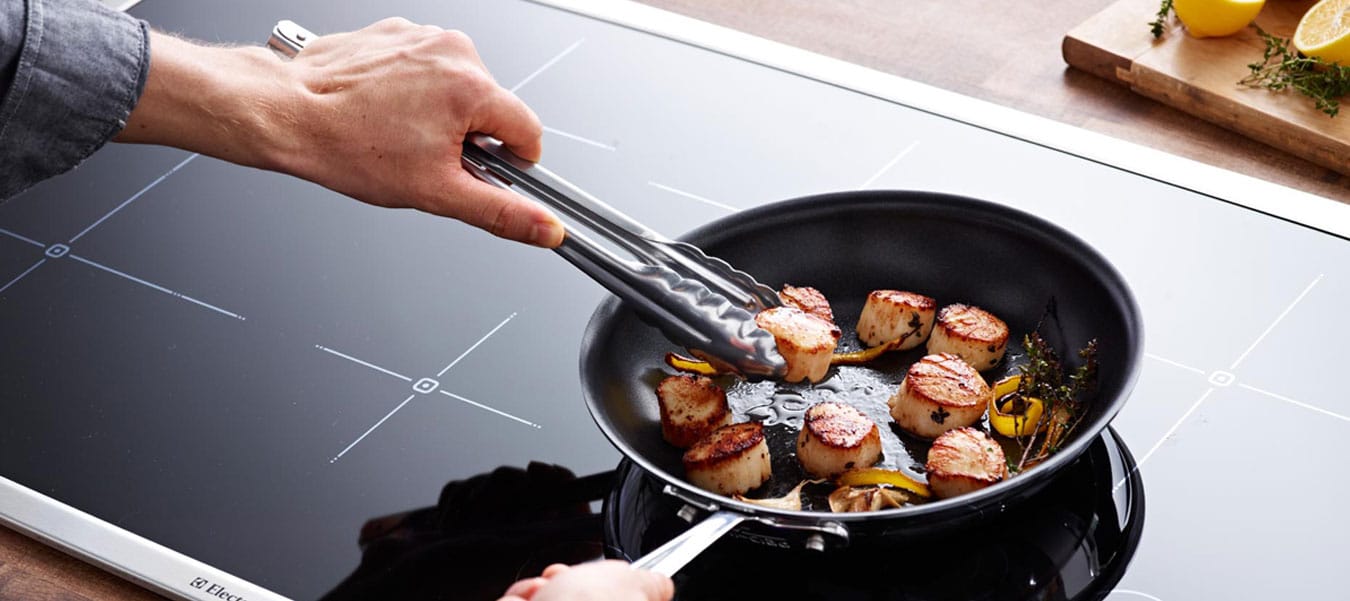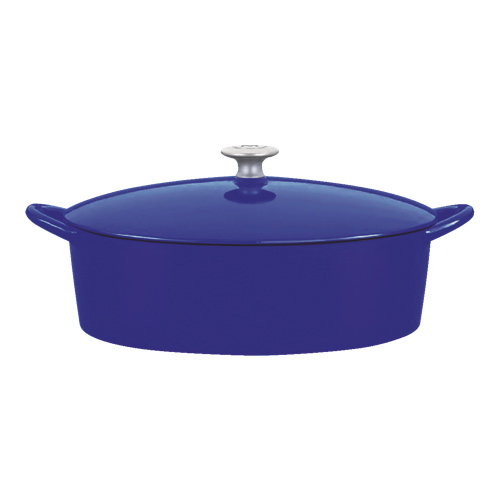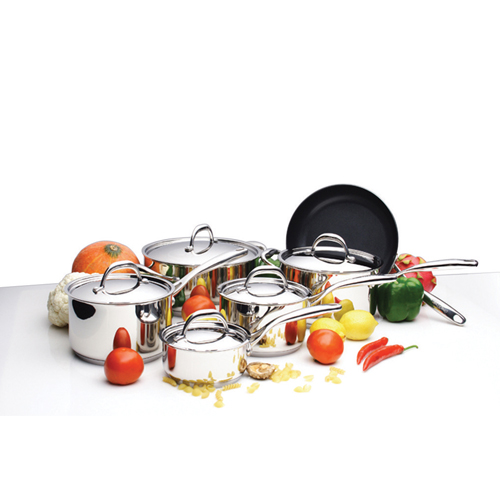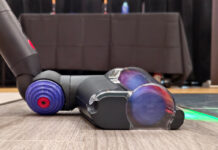 The average person doesn’t sit down and really consider his or her pots and pans until something changes in how they cook. Maybe you want to make a new dish that requires a bigger pot than you have at home, you’ve changed your mind about non-stick coating and want to give a cast iron frying pan a try, or you’ve installed a brand new range and it requires a brand new set of cookware.
The average person doesn’t sit down and really consider his or her pots and pans until something changes in how they cook. Maybe you want to make a new dish that requires a bigger pot than you have at home, you’ve changed your mind about non-stick coating and want to give a cast iron frying pan a try, or you’ve installed a brand new range and it requires a brand new set of cookware.
Not every new range requires you to upgrade your cookware, but you’ll need to if you’ve bought a sleek, shiny induction range. If you read up on induction ranges in Lindsey’s post before you bought one, you’ll know that there are only a few types of cookware you can use with an induction range. That’s because induction ranges work by supplying energy directly to the cooking vessel via a magnetic field, and your cookware needs to support it.
What cookware works and doesn’t work on induction ranges
To cook on an induction range, there are only a few types of cookware you can use: cast iron and stainless steel. If you have aluminum, copper, glass, or any other type of pots and pans besides cast iron and stainless steel, you’re going to need to upgrade before you can use your induction range.
Before I get to the nitty gritty on these types of cookware, here’s a quick list of essential pots and pans you should have to use with your induction range:
- 12 inch cast iron skillet
- 12 inch stainless steel skillet
- 2 quart sauce pan
- 4 quart sauce pan
- 10 inch sauté pan
- Cast iron Dutch oven
- Stock pot
Cast Iron Cookware

There’s a reason why your mom or grandmother still use their old cast iron frying pan—taken care of properly, cast iron cookware will last forever, so when you buy these pieces, you can consider them an investment.
Cast iron cookware has really come into style again over the past few years, and the latest cast iron pieces come in bright, kitchen friendly colours people love. These types of pots and pans work great on both induction range and any other type of range you use.
One of the essential pieces of cast iron cookware you should have for your induction range is a 12-inch frying pan or cast iron sauté pan. This size of frying pan is perfect for making pasta sauces, chilli, or stews, and because it’s coated in enamel, you don’t have to worry about seasoning it the way you would an older cast iron pan.
Next up, you’ll need a cast iron Dutch oven. A Dutch oven is essential for dishes like pot roast, whole chickens, or a piping hot stew, you’ll use one of these on your induction range every day.
The truly great thing about having cast iron cookware is that there’s only one pot to clean. You can take them from the stove to the oven and use them as a serving dish on the table—they’ll cook your food perfectly and retain their heat while serving.
Stainless Steel Cookware

In addition to your cast iron pieces, stainless steel cookware pieces will round out the essentials for your induction range. You’ll need to choose a set or individual pots and frying pans made from solid stainless steel so they’ll conduct heat properly on your range.
Picking up an entire set of stainless steel cookware at one time takes the guesswork out of choosing your essential pots and pans. Be sure to choose a stainless steel cookware set that can stand up to any dish you throw in it. The base is designed for fast and even heat control, and the set has all of the pieces you need including 3 sizes of saucepans, one stainless steel Dutch oven, 1 sauté pan, and a fry pan.
One of the last essential items you’ll need to use on your induction range is a stockpot. I’ve used a stock pot for everything from creating chicken stock to cooking a big pot of corn on the cob. When you use one that’s created from solid stainless steel, you’ll notice that the welded handle doesn’t retain a ton of heat when you pick it up.
Induction Range cookware extras you’ll love
These might not be on your list of essential pots and pans for your induction range, but you’ll love them all the same.
Crepe pan

A cast iron frying pan is great for making pancakes, but if you want to get really creative making crepes and pancakes you’ll pick up a crepe pan. When made from enameled cast iron they work with both induction and other types of ranges. The flat bottom makes it easy to grill and flip the perfect pancake or crepe.
Iron grill pan
Beyond breakfast, you’ll want to grill a steak or make a grilled sandwich on your induction range once in awhile, and that’s where a cast iron grill pan comes in handy. Cast iron is the best cookware for searing meat or grilling to perfection, and a grill pan will do that for chicken, beef, and more.
Now that you know everything there is to know about cookware for your induction range, all you have to do is fill up your fridge and get cooking in the kitchen. If you’ve got a favourite recipe to share using cast iron or stainless steel cookware, please share in the comments.
In the meantime, here’s a recipe you might want to try when you’re all set up and ready to go. You can use a 12” cast iron frying pan or the cast iron grill pan for this one. Just try it and you’ll see: it will be the best steak you’ve ever had.
Pan-seared rib eye steak
Recipe from the foodnetwork.com. Photo from seriouseats.com.
Place a 10-to-12-inch cast-iron skillet in the oven and heat the oven to 500 degrees F. Bring the steak to room temperature.
Ingredients
Canola oil, to coat
Kosher salt and ground black pepper
When the oven reaches temperature, remove the skillet and place on the range over high heat for 5 minutes. Coat the steak lightly with oil and sprinkle both sides with a generous pinch of salt. Grind on black pepper.
Immediately place the steak in the middle of the hot, dry skillet. Cook 30 seconds without moving. Turn with tongs and cook another 30 seconds, then put the pan straight into the oven for 2 minutes. Flip the steak and cook for another 2 minutes. (This time is for medium-rare steak. If you prefer medium, add a minute to both of the oven turns.)
Remove the steak from the skillet, cover loosely with foil and rest for 2 minutes. Serve whole or slice thin and fan onto plate.





